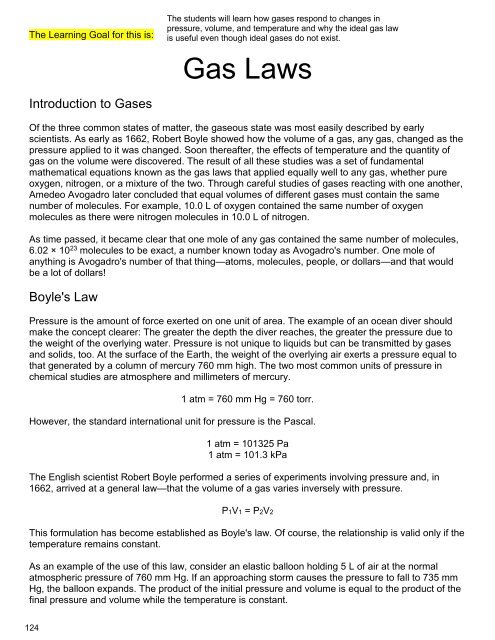You also want an ePaper? Increase the reach of your titles
YUMPU automatically turns print PDFs into web optimized ePapers that Google loves.
The learning goal for this assignment is : Differentiate among the four states of matter<br />
• Kinetic energy- the energy an object has because of its motion.<br />
Eduardo Alfonso\<br />
Period 5<br />
Chapter 13 notes<br />
• According to the theory of kinetic energy, all matter is composed of tiny particles that are<br />
constantly in motion<br />
• In the 3 different states of matter, these constantly moving particles are set up differently.<br />
In a gas, the particles are relatively far apart compared to that of liquids and solids, and<br />
there is empty space between them, as no attractive or repulsive forces exist within these<br />
particles. Since the movement of these particles is rapid, constant, and random, no matter<br />
what the shape of the container is it will always end up getting filled up by the gas that is<br />
within said container. Uncontained, a gas can spread to wherever, even into space.<br />
• The particles of a gas change direction only when they collide with something, such as<br />
another particle or a part of the container within they are being held inside of.<br />
• The particles in a gas move around at a very fast rate, for example oxygen particles at a<br />
temperature of 20 degrees C. travel around at a speed of 1700km/h<br />
• A balloon filled with gas will maintain its shape because of the pressure within it<br />
• Moving particles exerting force with when they collide with other particles causes gas<br />
pressure, which is the force exerted by a gas per unit surface area of an object<br />
• The force exerted by a particle crashing into another one is very minuscule, but this same<br />
process occurring constantly will build up a good amount of pressure.<br />
• If there is no particles, there can be no pressure, and an empty space with no particles or<br />
pressure whatsoever is called a vacuum.<br />
• Atmospheric pressure is caused by earth’s gravity holding the particles found in air<br />
within its atmosphere, and then much like gas pressure, the process of the particles<br />
bouncing off of each other causes pressure<br />
• As the elevation of earth increases, the atmospheric pressure will decrease<br />
• IN order to accurately measure atmospheric pressure, a device called a barometer is used<br />
• The SI unit of pressure is the pascal (Pa), which represents a very small amount ofm<br />
pressure<br />
• The normal atmospheric pressure on earth is about 100,000 Pa<br />
• 1 atm = 760 mm Hg = 101.3 kPa<br />
• When a substance is heated, its particles absorb energy, some of this energy is left stored<br />
within the particles. This energy is reffered to as potential energy<br />
121



